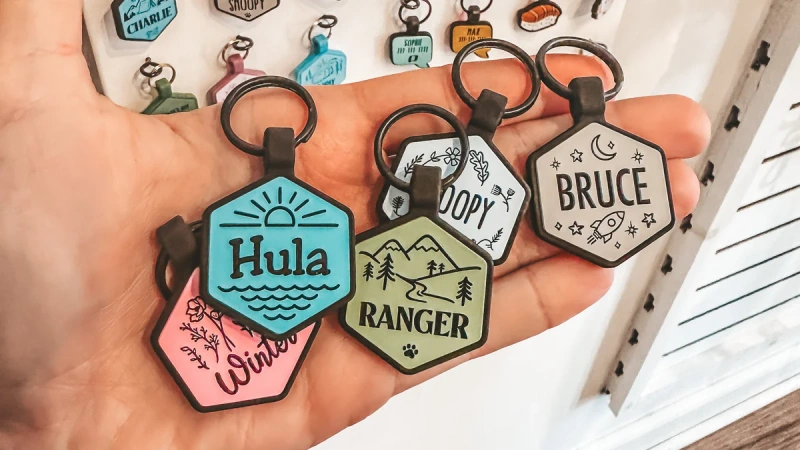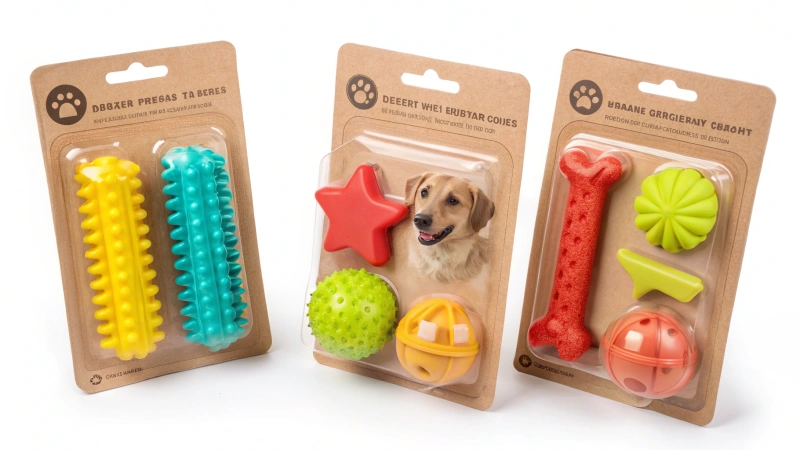Understanding how dogs perceive colors is essential for pet owners and manufacturers alike. Many people believe that dogs see the world in black and white, but this is a common misconception. In reality, dogs have a unique way of seeing that is different from humans. This article will explore what colors dogs can see, the physiology of their vision, how it differs from human vision, and the implications for product design. Additionally, we will address frequently asked questions to provide a comprehensive understanding of canine color perception.
What colors can dogs see?
Dogs primarily see two colors: blue and yellow. Their vision is classified as dichromatic, meaning they have only two types of color receptors, or cones, in their eyes. In contrast, humans have three types of cones, which allow us to perceive a wider range of colors.
Key points about canine color vision
- Dichromatic vision: Dogs have two types of cones that are sensitive to blue and yellow wavelengths.
- Limited color range: Colors like red and green appear as shades of gray or brown to dogs.
- Comparison to humans: Dogs’ color vision is similar to that of humans with red-green color blindness.
Understanding dog color perception
Research indicates that dogs can distinguish between shades of blue and yellow but struggle with red and green. For example, a bright blue toy will stand out to a dog, while a red toy may blend into the grass, making it difficult for them to see.
A study conducted by scientists at the University of Washington found that dogs’ eyes contain cone cells that respond to blue light (with a peak sensitivity around 429 nm) and yellow light (with a peak sensitivity around 555 nm). This means that while dogs can see blue and yellow, they cannot differentiate between red and green, leading to a muted perception of these colors.
The physiology of dog vision
To understand how dogs see the world, it’s essential to examine the structure of their eyes. Dogs have a higher number of rod cells, which are responsible for detecting light and motion, compared to cone cells. This gives dogs an advantage in low-light conditions, allowing them to see better in dim environments.
Key features of dog vision
- Rod cells: Dogs have more rod cells, which enhance their ability to see in low light and detect motion.
- Cone cells: Dogs possess two types of cone cells, limiting their color perception to blue and yellow.
- Field of view: Dogs have a wider peripheral vision, allowing them to see more of their surroundings compared to humans.
Visual acuity
While dogs have excellent motion detection and low-light vision, their visual acuity is not as sharp as that of humans. Studies suggest that dogs have approximately 20/50 vision, meaning they need to be 20 feet away to see something as clearly as a human can from 50 feet away. This means that while dogs are adept at spotting movement, they may not see fine details as well as humans do.
The world through a dog’s eyes

Imagine looking out at a landscape filled with vibrant colors, where reds, greens, and blues create a stunning panorama. Now, picture that same landscape through your dog’s eyes. For them, the world is less colorful, primarily dominated by shades of blue and yellow.
Everyday life and color perception
Dogs’ color vision significantly impacts their daily experiences. For instance, a bright yellow ball will capture a dog’s attention more effectively than a red ball, which may appear gray against green grass. Understanding this can help pet owners select toys and accessories that are more engaging for their dogs.
Practical implications for dog owners
- Choosing toys: Opt for toys in blue and yellow to enhance visibility and engagement.
- Training aids: Use colors that dogs can see well to create effective training tools.
- Safety gear: Select harnesses and collars in bright colors to ensure visibility during walks.
Implications for product design
Understanding canine color perception is crucial for manufacturers of pet products. By designing items that align with dogs’ visual capabilities, companies can create products that are not only functional but also appealing to dogs.
Designing for dogs
- Color selection: Use blue and yellow as primary colors in toys, collars, and harnesses to enhance visibility.
- Contrast with environment: Consider the typical environments where products will be used. For example, a bright yellow toy will stand out against green grass.
- Testing and feedback: Conduct trials with different colors and gather feedback from dog owners to determine which colors resonate best with dogs.
Example of effective product design
Imagine a dog toy designed for fetch games in a park. A bright yellow ball will be easily spotted by a dog against the green grass, while a red ball may blend in, making it harder for them to find. By focusing on colors that dogs can see, manufacturers can create products that enhance the play experience.
FAQ
Do dogs see in black and white?
No, dogs do not see in black and white. They perceive the world primarily in shades of blue and yellow, with red and green appearing as gray or brown.
Is a dog color blind?
Dogs are not color blind in the traditional sense; they simply have a different color perception. Their dichromatic vision allows them to see blue and yellow but limits their ability to distinguish between red and green.
Can dogs see at night?
Yes, dogs have excellent night vision due to the higher number of rod cells in their eyes. This allows them to see well in low-light conditions, making them more adept at navigating in the dark than humans.
Do dogs see TV?
Dogs can see images on a television screen, but their perception may be different from ours. They are more sensitive to motion and may not see the same colors as humans do. Some dogs may react to moving images, while others may not show much interest.
Conclusion
Understanding how dogs perceive colors is essential for pet owners and manufacturers alike. While dogs see the world differently than humans, their ability to distinguish between blue and yellow adds a unique richness to their experiences. By considering these insights in product design and everyday interactions, we can enhance our dogs’ lives and strengthen the bond we share with them.
At Wedogy, we are committed to providing high-quality pet products that cater to the unique needs of dogs. Explore our range of dog harnesses, collars, leashes, and more, and let’s work together to create a vibrant world for our furry friends.




